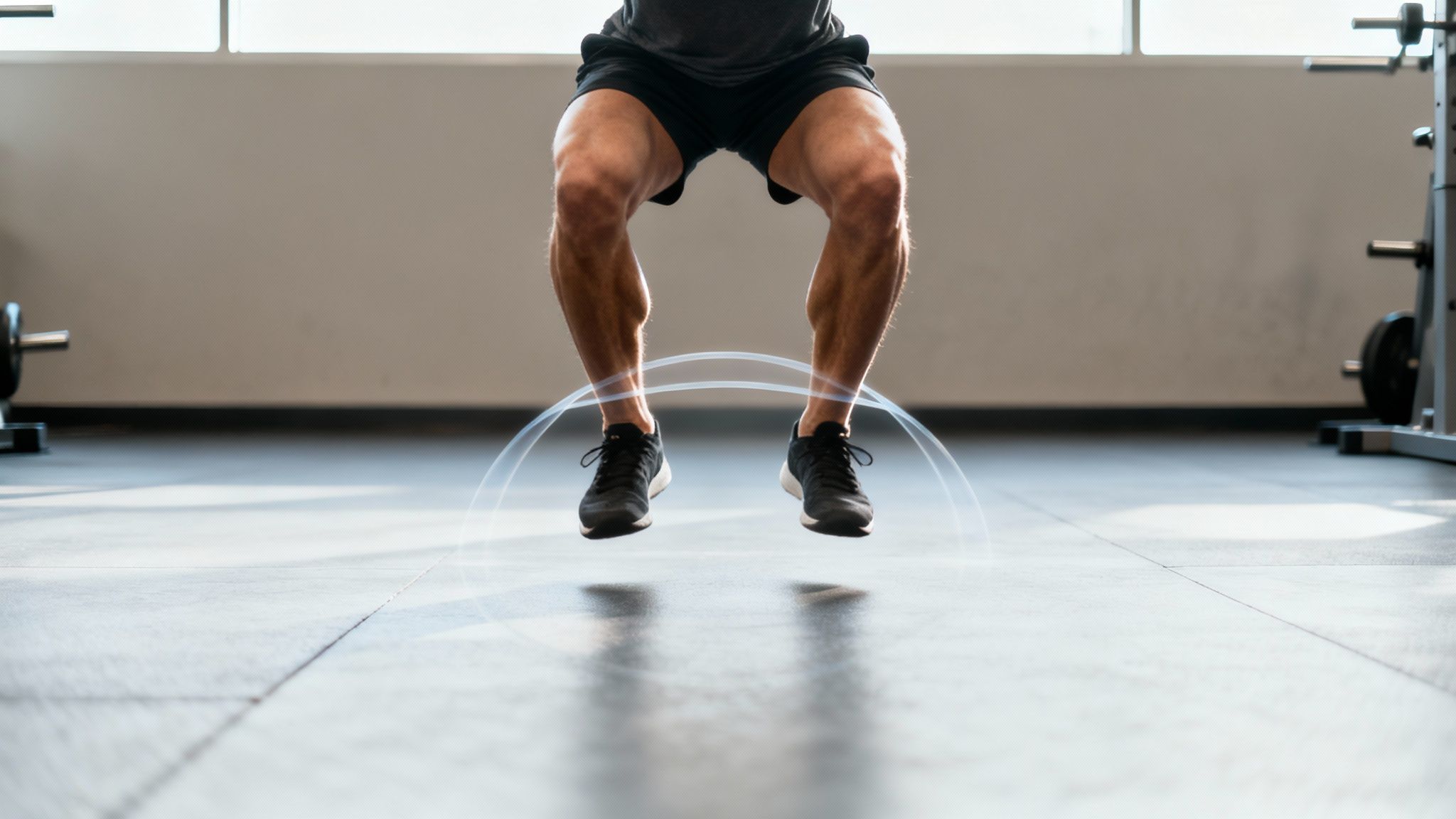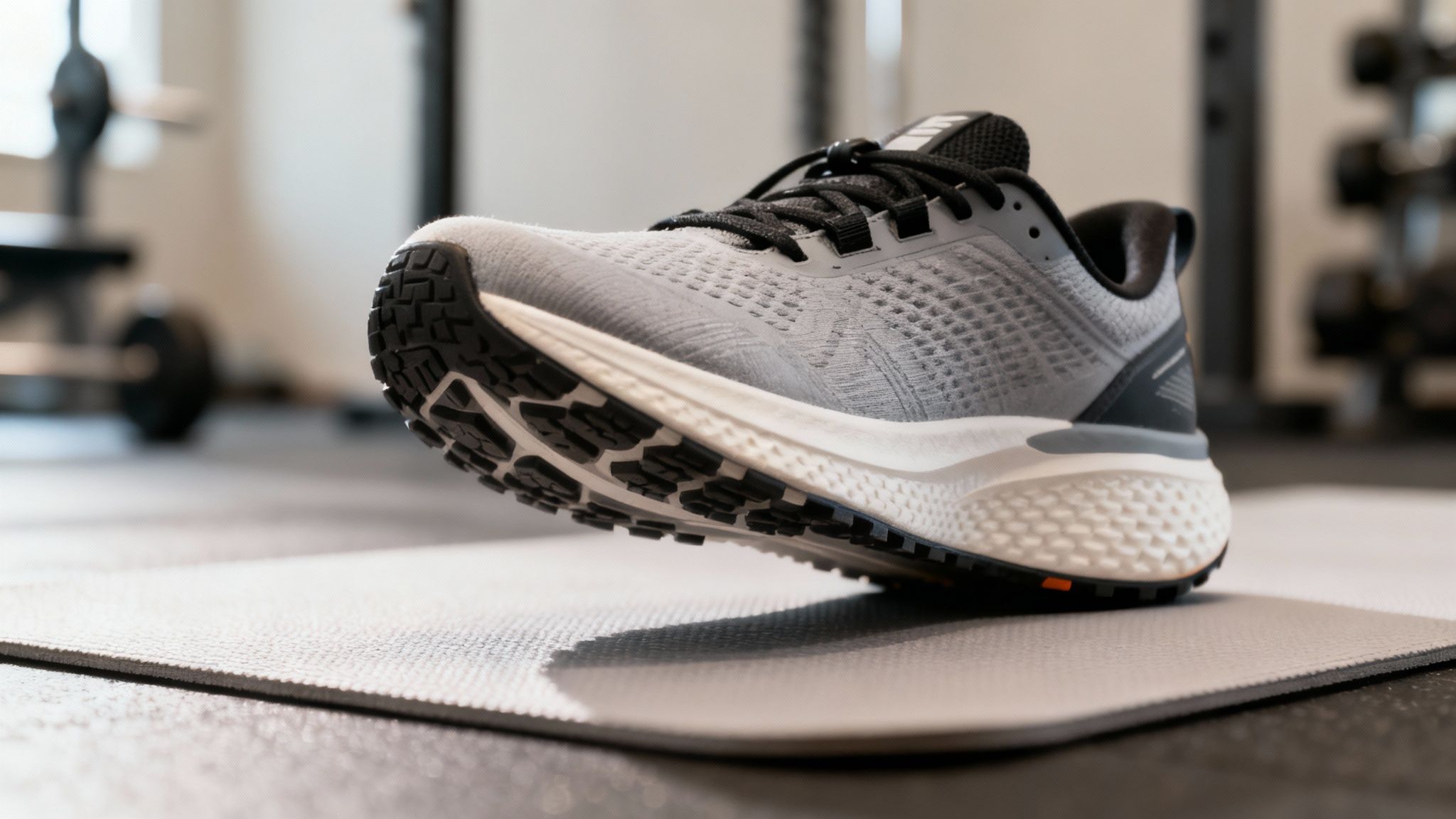Plyometric Leg Workout for Explosive Power
- Flourish Everyday Health And Fitness

- Oct 27
- 8 min read
Updated: Nov 6
A plyometric leg workout is a training method centered on explosive, jump based movements that utilize the stretch shortening cycle (SSC) to build lower body power. By rapidly transitioning from a muscle stretch to a powerful contraction, you can significantly improve jump height, sprint speed, and agility. Performing these exercises is extremely important because it will give you the reaction time to catch yourself if you trip and prevent you from falling. These exercises are particularly relevant for the older population.
What is a Plyometric Leg Workout?
Think of your muscles as a rubber band. Stretching it before letting go makes it snap back with force. This is the core principle of plyometric training. You load the muscle with a quick stretch (eccentric phase) and immediately follow with an explosive contraction (concentric phase).

This training style, filled with exercises like squat jumps and box jumps, trains your nervous system to fire muscle fibers more rapidly, thereby increasing your power output. It is highly beneficial for athletes as it:
Boosts vertical jump by targeting fast-twitch muscle fibers.
Improves acceleration and sprint speed.
Enhances agility for quick directional changes.
Caution: A solid strength foundation is crucial before beginning plyometrics. Ensure you can comfortably perform bodyweight squats to minimize injury risk. Always prioritize soft landings and wear supportive footwear to protect your joints.
Index of Sections
The Science Behind Explosive Power: Understanding the neuromuscular mechanics of plyometrics.
Preparing for Plyometric Training: Essential warm-ups and safety considerations.
The Complete Plyometric Leg Workout: A structured routine with beginner, intermediate, and advanced levels.
Choosing the Right Shoes for Jump Training: Reviews and key features for optimal footwear.
Frequently Asked Questions: Expert answers to common plyometric queries.
References: Sources cited in this guide.
For a deeper dive, check out our guide on how plyometric training can help you jump to peak performance.
The Science Behind Explosive Power
A plyometric leg workout is more than just jumping; it is a precise training method designed to enhance the efficiency of your neuromuscular system. It trains the brain and muscles to communicate more effectively, allowing for faster and more forceful muscle contractions. This develops power—the ability to apply strength in a fraction of a second.
Strength vs. Power
It is essential to distinguish between strength and power.
Strength is the maximum force a muscle can generate, regardless of time. Think of a powerlifter executing a slow, heavy squat.
Power is the ability to exert force rapidly. An example is a basketball player exploding upwards for a dunk.
While strength is a vital foundation, a plyometric leg workout specifically targets the power component, bridging the gap between being strong and being athletic.
Neuromuscular Adaptation
The effectiveness of plyometrics lies in its impact on the central nervous system. Each explosive jump trains the nervous system to recruit muscle fibers, especially fast twitch fibers, more rapidly and in greater numbers. Over time, your body becomes highly efficient at converting stored elastic energy into explosive force.
This concept was significantly advanced by Russian coach Yuri Verkhoshansky in the late 1960s with his "shock method," which demonstrated how to use the stretch shortening cycle to build explosive athletes (Verkhoshansky, 1968). Modern research confirms that plyometric workouts can lead to a 10 to 20% increase in power output compared to traditional strength training alone (Markovic & Mikulic, 2010). You can read more about the history of plyometrics to see its evolution.
Preparing for Plyometric Training
Attempting a high impact plyometric leg workout without proper preparation is a significant injury risk. This preparation phase ensures your body is ready for the demands of explosive training. A baseline level of strength is nonnegotiable. If you can perform a set of bodyweight squats with proper form, your muscles and connective tissues are likely prepared for the initial shock of jumping and landing.
Essential Gear and Surface
Your equipment and training environment are crucial for safety and performance.
Proper Footwear: Cross-training shoes are ideal. They provide a balance of firm cushioning to absorb shock and robust lateral support for stability. Running shoes are often too soft and lack the necessary side to side support.
Training Surface: Avoid hard, unforgiving surfaces like concrete. Opt for surfaces with more give, such as a rubberized gym floor, a track, or dry grass, to reduce joint stress.
A safe landing is a soft landing. Absorb force with your muscles, not your joints, to protect your knees and ankles from unnecessary strain.
The Dynamic Warm-Up
A dynamic warm-up is critical before any plyometric session. It increases blood flow, activates key muscle groups, and primes the nervous system for explosive movements. A proper warm-up should last 5-10 minutes. For more detail, see our article on how to warm up before exercise for peak performance.
Sample Dynamic Warm-Up:
Leg Swings: 10-12 reps forward-and-backward and 10-12 side-to-side on each leg.
Glute Bridges: 15 reps, focusing on squeezing the glutes at the peak.
Walking Lunges: 10 steps forward on each leg with an upright torso.
3. The Complete Plyometric Leg Workout
This section provides a structured plyometric leg workout with progressions for beginner, intermediate, and advanced levels. The focus should always be on the quality of each repetition. Explode up with maximum intent and land softly, absorbing the impact with your muscles.

Beginner Level: Foundational Power
Focus on mastering landing mechanics and building initial explosive strength.
Squat Jumps (3 sets of 5 reps): From a quarter squat, explode vertically. Land softly with bent knees.
Box Jumps (Low Box, 12-18 inches) (3 sets of 4 reps): Jump onto a sturdy box, landing gently. Step down, do not jump down.
Jumping Rope (2 sets of 60 seconds): Improves coordination and conditions lower legs for plyometric stress.
Rest: 60-90 seconds between sets.
Intermediate Level: Building Athleticism
Once the basics are mastered, increase the intensity to enhance power and coordination.
Broad Jumps (3 sets of 5 reps): Jump forward for maximum distance, sticking the landing.
Tuck Jumps (3 sets of 6 reps): Jump vertically, pulling your knees toward your chest at the peak.
Box Jumps (Medium Box, 20-24 inches) (3 sets of 4 reps): Increase box height while maintaining perfect form.
Rest: 90 seconds between sets.
Remember, the goal of a plyometric leg workout is to train for power, not endurance. Ample rest is crucial for neural recovery.
Advanced Level: Peak Explosiveness
For experienced athletes with a strong strength base. These movements are highly demanding. Research shows consistent plyometric training can increase muscle power by up to 20% in just eight weeks (Markovic & Mikulic, 2010). You can learn more about the history and impact of plyometrics in sports.
Depth Jumps (3 sets of 4 reps): Step off a low box (12-18 inches). Upon landing, immediately explode into a vertical or broad jump. Minimize ground contact time.
Single-Leg Hops (3 sets of 5 reps per leg): Perform a series of forward hops on one leg, focusing on power and stability.
Rest: 2-3 minutes between sets for full neural recovery.
Workout Progression Summary
Fitness Level | Exercise | Sets x Reps | Rest Between Sets |
|---|---|---|---|
Beginner | Squat Jumps | 3 x 5 | 60-90 seconds |
Box Jumps (Low Box, 12-18") | 3 x 4 | 60-90 seconds | |
Jumping Rope | 2 x 60 sec | 60-90 seconds | |
Intermediate | Broad Jumps | 3 x 5 | 90 seconds |
Tuck Jumps | 3 x 6 | 90 seconds | |
Box Jumps (Medium Box, 20-24") | 3 x 4 | 90 seconds | |
Advanced | Depth Jumps | 3 x 4 | 2-3 minutes |
Single-Leg Hops | 3 x 5 per leg | 2-3 minutes |
4. Choosing the Right Shoes for Jump Training
The right shoes are a critical component of safety and performance in a plyometric leg workout. They must provide stability for takeoff, absorb shock upon landing, and support the foot during multi-directional movements.

Key Shoe Features
Midsole Cushioning: Look for a firm but responsive midsole that protects joints without feeling unstable or absorbing takeoff power.
Outsole Grip: A durable rubber outsole with a multi-directional tread pattern is essential for reliable traction.
Supportive Upper: The upper material should be durable and reinforced around the heel and midfoot to prevent the foot from sliding inside the shoe.
Top Athletic Shoe Reviews: Men
Nike Metcon 9: Known for its exceptional stability. The wide, flat heel and Hyperlift plate create a solid base, making it a great choice for workouts that combine plyometrics with strength training.
Reebok Nano X4: The Nano series excels in versatility. The X4 features Floatride Energy Foam for responsive cushioning and a secure upper, providing a great balance of stability and flexibility.
Hoka Kawana: While known for maximum cushioning, the Kawana offers a firmer, more stable platform than other Hoka models. It provides excellent shock absorption, making it ideal for those prioritizing joint protection.
Top Athletic Shoe Reviews: Women
Women's shoes are often designed on a different last to better fit the female foot.
Nike Metcon 9 (Women's): Offers the same stability and durability as the men's model but is shaped for a more precise women's fit. Excellent for controlled, powerful movements.
Reebok Nano X4 (Women's): A true "do-it-all" shoe, the women's Nano X4 provides a comfortable and stable platform suitable for varied workouts including box jumps and agility drills.
NOBULL Trainer+: This shoe is renowned for its durability and minimalist design. The stable platform and high-traction outsole offer excellent ground-feel and secure footing during explosive exercises.
Choosing the right footwear is a crucial step. A dedicated training shoe provides the specific support that running shoes lack, minimizing injury risk while maximizing performance.
Most of these fall into the cross-training category. To learn more, read our article: what are cross training shoes? An essential guide.
5. Frequently Asked Questions
How often should I do a plyometric leg workout?
For most individuals, one to two sessions per week is optimal. These sessions are highly demanding on the central nervous system, so they should be performed on non-consecutive days with at least 48 hours of rest in between to allow for proper recovery and adaptation.
Can I combine plyometrics with strength training?
Yes, this combination is highly effective. Perform plyometric drills at the beginning of your workout after a dynamic warm-up. This ensures your nervous system is fresh, allowing for maximum power generation. Follow with your traditional strength exercises like squats and deadlifts.
What is the difference between plyometrics and normal jumping?
The primary differences are intent and ground contact time. A plyometric leg workout focuses on minimizing the time spent on the ground to rapidly utilize the stretch shortening cycle. The intent is to be as explosive and reactive as possible, unlike casual jumping, which lacks this focus on speed and efficiency.
Can I do plyometrics if I have bad knees?
If you have a pre-existing knee condition, consult a doctor or physical therapist before starting. If cleared, begin with the lowest impact variations. Master landing mechanics by stepping off a very low box. Progress to jumping onto a soft plyo box to remove the landing stress. Avoid high impact drills like depth jumps until you have built significant strength and stability around the knee joint.
6. References
Markovic, G., & Mikulic, P. (2010). Neuro-musculoskeletal and performance adaptations to lower-extremity plyometric training. Sports Medicine, 40(10), 859–895.
Verkhoshansky, Y. V. (1968). Perspectives in the improvement of speed-strength preparation of jumpers. Yessis Review of Soviet Physical Education and Sports, 3(2), 28-34.
At Flourish-Everyday, we are dedicated to providing the information and gear necessary for your fitness journey. We help you find the best shoes and health insights to support every activity. Explore our resources at https://www.flourish-everyday.com to empower your path to a healthier life.


Comments